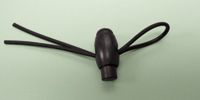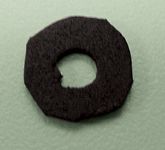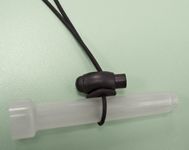Idea Exchange: How to make a tourniquet for exotic patients
A helpful tip for ferrets, guinea pigs, small reptiles, and birds.
We were looking for a small limb tourniquet for ferrets, guinea pigs, small reptiles, and birds. The standard ones made for dogs and cats are too big, and rubber bands and hemostats are either too tight or not tight enough. While shopping at a local craft store, we found some inexpensive waterproof materials that we used to make tiny tourniquets.
Supplies
- 2-mm rubber cording (Stretch Magic Silkies Necklace—Pepperell Crafts); I found these in the jewelry-making section (Figure 1). A package of six cords costs about $5.

Figure 1
- Plastic cord stops (single hole) for drawstrings on garments; I found these in the sewing section. A package of two costs about $2.30.
- 2-mm-thick craft foam; I purchased a 9-x-12-in sheet for $0.75.
Instructions
Cut the clasp ends off the rubber cording, and cut the cording into two pieces. Insert the ends of one piece into the hole of the cord stop (Figure 2). Insert the ends of the other piece into another cord stop to make a second tourniquet.

Figure 2
For delicate skin (e.g. birds, geckos), we made a foam doughnut to put between the leg and plastic cord stop. Cut a small round piece of foam about 1.5 cm in diameter, and use a hole punch to create a center hole (Figure 3).

Figure 3
Place the foam doughnut over the looped end of the rubber cording, and apply to the leg (Figure 4).

Figure 4
Dr. Laura Wade, DABVP (avian practice)
Lancaster, N.Y.